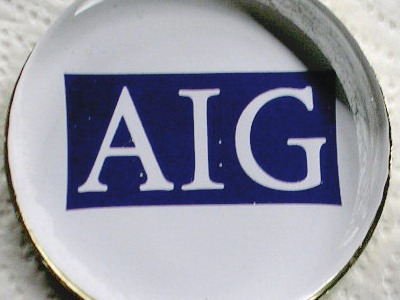
NEW YORK (Reuters) – The year was 1990 and Barack Obama was elected the first black president of the Harvard Law Review. The first Gulf War against Iraq began. And a Brookfield Asset Management <BAMa.TO> unit entered into a complex derivative deal with American International Group <AIG.N>.
Fast forward to today. Obama is the first black president of the United States. The second Iraq war is about to enter its 7th year. And Brookfield and AIG are in court battling over whether that long-ago interest rate swap is still binding after the giant insurer’s near collapse in September 2008.
At stake is a potential $1.2 billion payout the Toronto-based property manager may have to make to AIG in five years if interest rates do not suddenly surge above 9 percent. Right now, with the six-month London Interbank Offered Rate, or LIBOR, sitting at 0.39 percent, AIG is well on its way to collecting on that two-decade-old trade.
The Brookfield-AIG litigation is just one more chapter in the fallout from the U.S. government’s $182.3 billion bailout of the giant insurer. But it is a dispute that could have big financial repercussions for both Brookfield and AIG as the official termination date of the swap fast approaches.
AIG declined to discuss the case, as did lawyers for Brookfield.
SMALL SLIVER
The five-month-old lawsuit also sheds light on some of the 16,100 derivatives contracts remaining on the books of AIG Financial Products, more than 17 months after other, far less profitable deals involving derivatives called credit default swaps nearly plunged the insurer into bankruptcy.
But credit default swaps on poorly performing collateralized debt obligations represented just a small sliver of the derivative deals AIG Financial Products wrote for municipalities, banks and companies around the globe.
In fact, for many years, the division specialized in writing long-dated swaps for trading parties trying to protect themselves against fluctuations in interest rates, including super long-dated transactions like the one with Brookfield.
A person close to the company said about half of the still open derivative contracts at AIG Financial Products are either interest rate swaps or other interest rate-related derivatives. Those open contracts account for about 60 percent of the dollar value of the division’s $940 billion derivatives portfolio, or roughly $564 billion in notional value.
Another $150 billion of the dollar value of the derivative book at AIG Financial Products stems from “regulatory relief” swaps the insurer sold to mainly European banks seeking to lower the capital set aside for corporate loans and mortgages. In a September regulatory filing, AIG said it expects many of these derivatives to expire “with the next six months.”
ONCE GOLDEN
If AIG’s estimate is right, the vast majority of what will remain in its derivatives book by this summer will be contracts tied to some benchmark interest rate.
“They were the only institution that a lot of parties would deal with for long-term swaps,” said Edward Grebeck of Tempus Advisors, a Connecticut-based debt and structured finance consulting firm.
Grebeck said AIG’s once golden Triple A credit rating, which the company lost during the financial crisis, made it the go-to place for traders seeking to do a long-term swap.
Ever since the government bailed out AIG, the company has been winding down its derivatives division. In a controversial move, AIG paid tens of millions of dollars in bonuses to AIG Financial Products employees to help with the termination of derivatives deals with a notional value of about $1 trillion.
Some of the fruits of those labors were seen in AIG’s fourth-quarter earnings. The insurer said AIG Financial Products reported an operating profit of $80 million, compared with a loss of $17.2 billion a year earlier. But much of that turnaround stems from a rebound in some of the underlying assets that AIG wrote derivatives contracts on.
‘DIFFICULT TO PRICE’
AIG declined to comment on how many current derivatives are long-dated, with expiration dates that exceed 20 years. But in its just filed annual report, the insurer said: “Due to the long-term duration of AIGFP’s derivative contracts and the complexity of AIGFP’s portfolio, AIG expects that an orderly wind-down of AIGFP will take a substantial period of time.”
The number of super long-dated swaps still in AIG’s portfolio could be sizable. From 1987 to 1992, AIG Financial Products was a leader in writing extra long-dated swaps.
Daniel Calacci, a former derivatives trader and now a consultant, said most long-dated interest rate swaps last for about 10 years. But AIG Financial Products used to specialize in swaps that lasted 20 to 30 years. Calacci said many of those especially long-dated swaps “would still be in place.”
And just because the Brookfield transaction is in AIG’s favor, there’s no way of knowing whether the same can be said of those other long-dated interest rate swaps.
Derivatives consultant Janet Tavakoli said that “once you go beyond 20 years, it’s often difficult to price” the assets that are tied to a long-dated derivative. “When you go out that far you have no pricing instrument,” she said.
By the end of this year, AIG said it intends to reduce the overall value of its derivatives portfolio at AIG Financial Products to about $300 billion.
The Brookfield deal is one transaction AIG is fighting hard to keep in place because it is potentially of great value to the insurer. The swap was part of a $200 million financing deal AIG provided to a Brookfield subsidiary in 1990.
The insurer has argued that Brookfield is trying to use the financial crisis as an excuse to tear up a binding contract and “obtain a windfall at the expense of AIG and its stakeholders.”
Of course, one of AIG’s biggest stakeholders is the U.S. government.
(Reported by Matthew Goldstein; editing by John Wallace)